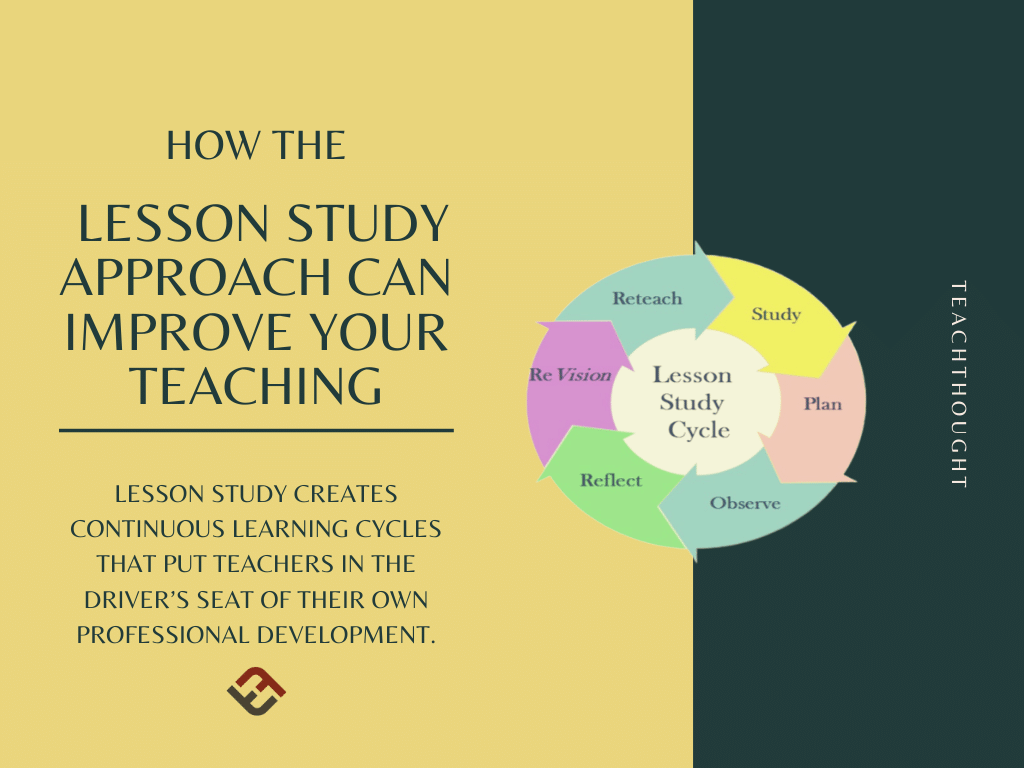
How Can The Lesson Study Approach Improve Your Teaching?
contributed by Vicki Collet
Making teaching a shared and public practice supports improved instruction.
When teachers have collaboration, reflection, and inquiry opportunities, they “can find better ways to answer the learning needs of students” (Lieberman & Wood, 2002, p. 42). Teacher inquiry makes us question practices that have become stale, generate innovation, and create dynamic learning for ourselves and our students.
Over the past decade, I’ve participated in teacher inquiry using Lesson Study. I’ve seen scores of teachers engage with authentic professional learning through this work. Lesson Study is a structure for teacher inquiry that is as straightforward as it sounds: the study of a lesson. However, Catherine Lewis, who learned about Lesson Study in Japan and has been instrumental in spreading its use in the United States, points out that during Lesson Study,
(Teachers) improve the lessons not as an end in itself, but as a way to deepen their own content knowledge, their knowledge of student thinking, their understanding of teaching and learning, and their commitment to improvement of their own practice and that of colleagues…Lesson study is not about discovering the one right way to teach a lesson, but about building knowledge of many teaching strategies and habits of observation, inquiry, and analysis of practice (Lewis & Hurd, 2011, p. 24).
When participating in Lesson Study, you will collaboratively plan lessons that become the focus of inquiry on effective teaching practices. Then you’ll observe one another teach lessons and collaboratively revise and refine your instructional plans, as shown in the figure below.

How The Lesson Study Approach Can Improve Your Teaching
Inquiry is the essential element of Lesson Study, so the clear focus you identify for a Lesson Study cycle should propel your desire to investigate, to analyze and study together. Pursuing the questions your group has identified provides challenge and authentic purpose, increasing your team’s motivation and engagement. The process will have immediate value because you have identified the problem for yourself.
The goal of Lesson Study is not to create the ideal lesson that is universally useful. During teacher preparation and professional development, you have doubtless been taught and encouraged to use ‘best practices.’ Although some practices are indeed more effective than others (and research has much to teach us), it is also true that there is no single, perfect lesson. This is true because you and I, and the students we teach, are diverse in so many ways. Lesson Study focuses on “the why of teaching: why teaching methods work in particular ways in particular settings” (Smagorinsky, as cited in Garcia & O’Donnell-Allen, 2015, p. 5).
Grow your school with TeachThought PD Collaborative Lesson Study Workshops.
In our quest for better ways of doing things, Lesson Study can help us identify places where we are frozen in old practices and can help us warm to new ones. Lesson Study uncovers new approaches that are informed by the examination of evidence gained through our professional inquiry. Collaboration with colleagues with similar contexts and concerns makes the insights gained especially helpful. By guiding our professional learning, teachers resist stagnation and become mobile, active agents of change. With our colleagues, we learn by asking questions, taking risks, and reflecting on successes and failures.
Lesson Study uses knowledge you gain from your classroom to stimulate professional conversations about teaching and learning. Shared experiences through joint planning and observation support the conversation, helping you develop and share your understanding with others.
If you are eager to investigate and improve instruction and increase your understanding about teaching, I invite you to learn more about Lesson Study. Lesson Study creates continuous learning cycles that put teachers in the driver’s seat of their own professional development.
——————–
References
Garcia, A., & O’Donnell-Allen, C. (2015). Pose, wobble, flow: A culturally proactive approach to literacy instruction. Teachers College Press.
Lewis, C. & Hurd, J. (2011). Lesson study step by step: How teacher learning communities improve instruction. Portsmouth, NH: Heinemann.
Lieberman, A., & Wood, D. R. (2002). From network learning to classroom teaching. Journal of Educational Change, 3, 315-337.
